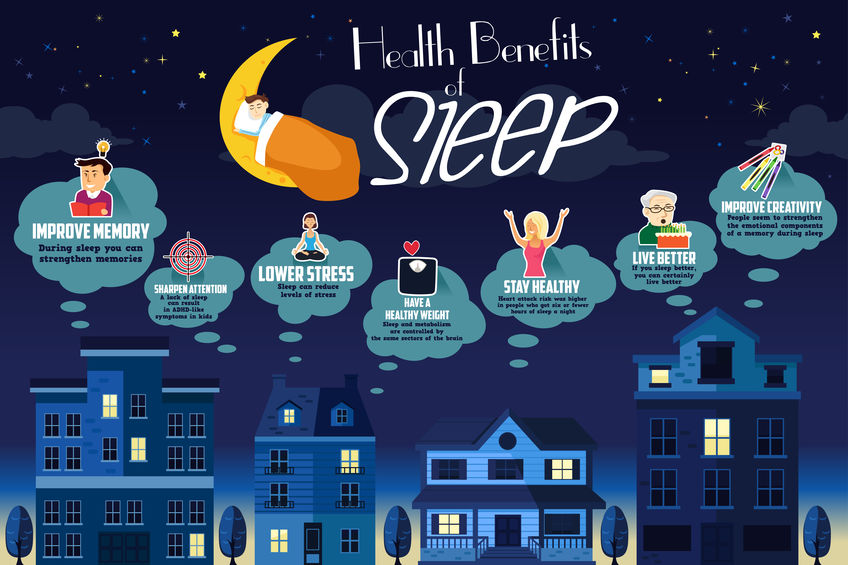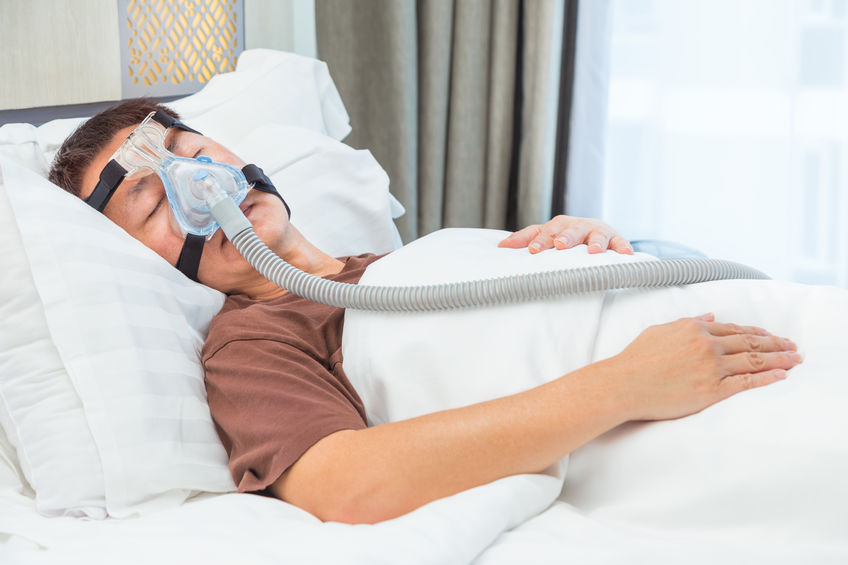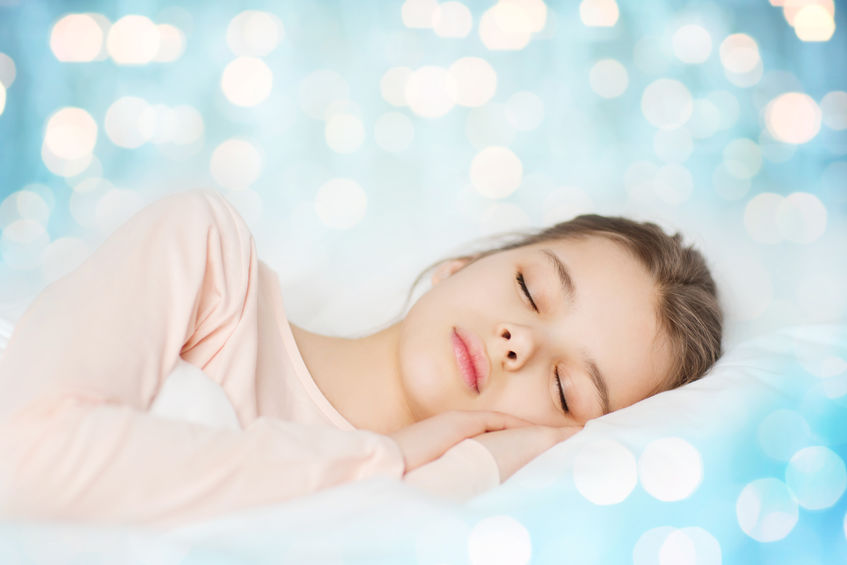
As we stated in the previous blog, we will address the following questions:
Why is quality sleep so essential to your health? What are the four stages of sleep and how do they contribute to your mental and physical wellbeing? And what is the process of diagnosing various sleep disorders that can include insomnia, Sleep Apnea, Central Sleep Apnea, Obstructive Sleep Apnea, Narcolepsy. Restless Leg Syndrome (RLS) Parasomnias. REM Sleep Behavior Disorder, Non-24-Hour Sleep Wake Disorder, Excessive Sleepiness.
“Sleep is the best meditation.”
– Dalai Lama
How true those words are when compared to the medical community’s focus on good sleep hygiene and a good night’s sleep restorative value.
“Sleep plays an important role in your physical health. For example, sleep is involved in healing and repair of your heart and blood vessels. Ongoing sleep deficiency is linked to an increased risk of heart disease, kidney disease, high blood pressure, diabetes, and stroke.” – National Institute of Health (NIH.gov)
What is the Definition of a Good Night’s Sleep?
“Quality sleep – and getting enough of it at the right times — is as essential to survival as food and water.”
– NIH
When it comes to quality sleep, “it’s not quantity but quality”, as they say among sleep therapy professionals. When it comes to quantity, it takes a minimum of four to five hours without waking, restlessness or sleep apnea episodes to feel refreshed. That does not mean four to five hours in bed, but four to five hours of deeper, quality sleep. To truly measure the quality of a patient’s sleep is about achieving the four stages of sleep, with possibly several cycles of each stage throughout the night. A cycle of sleep will range between 90 and 120 minutes.
The two basic types of sleep are the REM sleep (rapid eye movement) and non-REM sleep, which are linked to various brain waves and brain activity. A good night’s sleep is defined as equitable time in each stage of sleep, with various cycles of the various stages throughout the night. What are the four stages of sleep and what purpose do they serve?
STAGE 1 / N1
- What is it? Stage 1 is where the process of falling asleep, which can usually take a short period of time, from 1 to 5 minutes, and is your lightest sleep stage.
- What are the physical changes? In this stage, your heartbeat
 , breathing and eye movement should slow and your muscles begin to relax, possibly even twitch.
, breathing and eye movement should slow and your muscles begin to relax, possibly even twitch.
- Why important? This stage enables the body to begin its necessary processes to enter the other stages of deeper sleep. It’s where the body and brain activities start to slow. This is the stage where it is easiest to awake, so if uninterrupted the sleeper may not enter this stage again.
- What percentage is spent in this stage? You should spend less than 10% in this stage.
STAGE 2 / N2
- What is it? Stage 2 is a deeper, more subdued sleep, where you can spend 10-25 minutes in the first cycle and longer periods in subsequent cycles.
- What are the physical changes? Stage 2 is where your muscles relax even more, your body temperature will drop, eye movements should stop, and brain wave activity slows with bursts of activity.
- Why Important? The short bursts of brain activity actually resist the sleeper from being woken up from external disruptions and help improve transition into the next phase of sleep.
- What percentage is spent in this stage? You will spend the largest percentage of time in Stage 2, possibly up to 50%.
STAGE 3 / N3
- What is it? Stage 3 is a restful non-REM sleep and is more commonly known as deep sleep. This is the stage of sleep where your body experiences the most rejuvenation.
- What are the physical changes? Your heartbeat and breathing slow to the lowest level during this stage, respirations stabilize, muscles further relax and it becomes difficult to awaken during this stage. The brain activity is identified as delta waves, or short-wave sleep (SWS), which is thought to emerge from the thalamus.
- Why important? Stage 3 creates an environment for bodily recovery and growth, boost the immune system, and improves the area of the brain that is responsible for insightful thinking, creativity and memory.
- What percentage is spent in this stage? You spend 20-30% of your sleep in this stage. A majority of this percentage happens in the first half of your night’s sleep. In the second half, Stage 3 cycles get shorter and more time is spent in REM sleep. On the other hand, children spend 70-80% of their sleep in Stage 3, which is imperative as kids’ growth is dependent on the rejuvenation effects of this stage.
STAGE 4 / REM Sleep
- What is it? Stage 4 is REM sleep. Even though your eyes are closed, they can be seen moving, which is why it’s called Rapid Eye Movement (REM) sleep.
- What are the physical changes? During REM Sleep, your brain activity, blood pressure and heart increases, almost to the level of wakefulness, your eye movements move rapidly, your breathing becomes faster and irregular, and your body experiences atonia (temporary paralysis of your muscles, except for your eyes and breathing).
- Why Important? During this stage, your cognitive functions (memory, learning, creativity) are improved and restored. Dreaming occurs in this stage of sleep.
- What percentage is spent in this stage? You can spend 20-30% of your night in this stage, with REM cycles starting out shorter and then lengthening through the second half of your night. As you age, less time is spent in REM sleep and since this is where memory consolidation occurs, it can explain why memory retention decreases as we get older. On the other hand, newborns and infants can spend as 50% in REM sleep and reach it as soon as they fall asleep.
Why is Quality Sleep Essential to your Health?
“Sleep stages are important because they allow the brain and body to recuperate and develop. Failure to obtain enough of both deep sleep and REM sleep may explain some of the profound consequences of insufficient sleep on thinking, emotions, and physical health.” – Harvard.edu

Those who do not reach optimal percentages for each sleep stage, such as those with sleep apnea, OSA, insomnia, may not get enough sleep and are less likely to properly cycle into the deeper sleep stages (non-REM and REM sleep). Research shows that a chronic lack of sleep or poor quality sleep can result in a series of other comorbidities including obesity, high blood pressure, diabetes, cardiovascular disease, depression, anxiety, ADHD, increase risk of Alzheimer’s, as well as shorten life expectancy.
Therefore, good sleep is essential to a healthy and longer life. You may think this is an overstatement, but sleep affects restoration of every type of tissue and system in your body, from the brain, heart, and lungs to metabolism, immune function, mood, and disease resistance.
How to Determine Your Sleep Stage Levels:
If you are concerned about your sleep quality or are experiencing symptom of OSA, sleep apnea, insomnia or other sleep disorders, do not dismiss or ignore your concerns but get help. First, speak to your primary care doctor or pediatrician (if concerned about your children), and tell them what you are experiencing. It may be helpful to keep a sleep diary for a few weeks to a month prior to your appointment to show a pattern of your sleep concerns. They may order a sleep study directly or they may refer you to a sleep professional for further investigation.
Once a sleep study is offered, your insurance may dictate whether a home sleep test or a sleep test in a sleep center or lab is prescribed.
In a
Lab Sleep Study, also called Nocturnal Polysomnography, you will be hooked up to equipment that will monitor your heart, lung, brain activity, bodily movements, breathing and oxygen levels. While this may be the most accurate monitoring, it can be inconvenient for the patient depending on their mobility, take longer to schedule, and cause unusual disruption of sleep for the patient as they are not in their bed, in their home and hooked up to multiple electrodes on their head, chests, face, hands, and fingers.
At home sleep tests are on the rise, during the COVID-19 pandemic, to reduce spread as it keeps the patient at home with less interaction with sleep center’s personnel. During a home sleep test, the patient will wear: (1) a device that is strapped to their chest with belts, (2) an oximeter probe on their finger and (3) a nasal canula to monitor their heartrate, oxygen levels and breathing patterns. Training on set up and how to put on the device will take place when the patient picks up the device.
After one to several nights’ sleep, the device is dropped off and the data that will be downloaded and analyzed by a sleep professional. If the data is considered accurate, the physician will prescribe therapy without further testing. However, the home sleep tests may not detect all cases of sleep apnea, especially those less severe, so they may recommend a polysomnography in a sleep center.
After the test, your physician will receive a copy of your data to determine a proper diagnosis and recommend a specific therapy. Then you will be referred a CPAP Provider who will work in conjunction with your physician’s prescription and your insurance requirements to select the proper device, train the patient and monitor short-term and long-term treatment success.
If you are located in Idaho,
Everything CPAP is Idaho’s number one CPAP supply company. We are located in Boise and service the entire Treasure Valley area. At Everything CPAP, we understand how serious of a problem untreated sleep apnea can be for your health.
We are ACHC accredited.
How is your sleep?
Take our online Sleep Quiz to better understand your particular risk factors of OSA:
https://www.everythingcpap.com/sleep-quiz/ As we stated in the previous blog, we will address the following questions:
Why is quality sleep so essential to your health? What are the four stages of sleep and how do they contribute to your mental and physical wellbeing? And what is the process of diagnosing various sleep disorders that can include insomnia, Sleep Apnea, Central Sleep Apnea, Obstructive Sleep Apnea, Narcolepsy. Restless Leg Syndrome (RLS) Parasomnias. REM Sleep Behavior Disorder, Non-24-Hour Sleep Wake Disorder, Excessive Sleepiness.
As we stated in the previous blog, we will address the following questions:
Why is quality sleep so essential to your health? What are the four stages of sleep and how do they contribute to your mental and physical wellbeing? And what is the process of diagnosing various sleep disorders that can include insomnia, Sleep Apnea, Central Sleep Apnea, Obstructive Sleep Apnea, Narcolepsy. Restless Leg Syndrome (RLS) Parasomnias. REM Sleep Behavior Disorder, Non-24-Hour Sleep Wake Disorder, Excessive Sleepiness.
 , breathing and eye movement should slow and your muscles begin to relax, possibly even twitch.
, breathing and eye movement should slow and your muscles begin to relax, possibly even twitch. Those who do not reach optimal percentages for each sleep stage, such as those with sleep apnea, OSA, insomnia, may not get enough sleep and are less likely to properly cycle into the deeper sleep stages (non-REM and REM sleep). Research shows that a chronic lack of sleep or poor quality sleep can result in a series of other comorbidities including obesity, high blood pressure, diabetes, cardiovascular disease, depression, anxiety, ADHD, increase risk of Alzheimer’s, as well as shorten life expectancy.
Therefore, good sleep is essential to a healthy and longer life. You may think this is an overstatement, but sleep affects restoration of every type of tissue and system in your body, from the brain, heart, and lungs to metabolism, immune function, mood, and disease resistance.
Those who do not reach optimal percentages for each sleep stage, such as those with sleep apnea, OSA, insomnia, may not get enough sleep and are less likely to properly cycle into the deeper sleep stages (non-REM and REM sleep). Research shows that a chronic lack of sleep or poor quality sleep can result in a series of other comorbidities including obesity, high blood pressure, diabetes, cardiovascular disease, depression, anxiety, ADHD, increase risk of Alzheimer’s, as well as shorten life expectancy.
Therefore, good sleep is essential to a healthy and longer life. You may think this is an overstatement, but sleep affects restoration of every type of tissue and system in your body, from the brain, heart, and lungs to metabolism, immune function, mood, and disease resistance.








